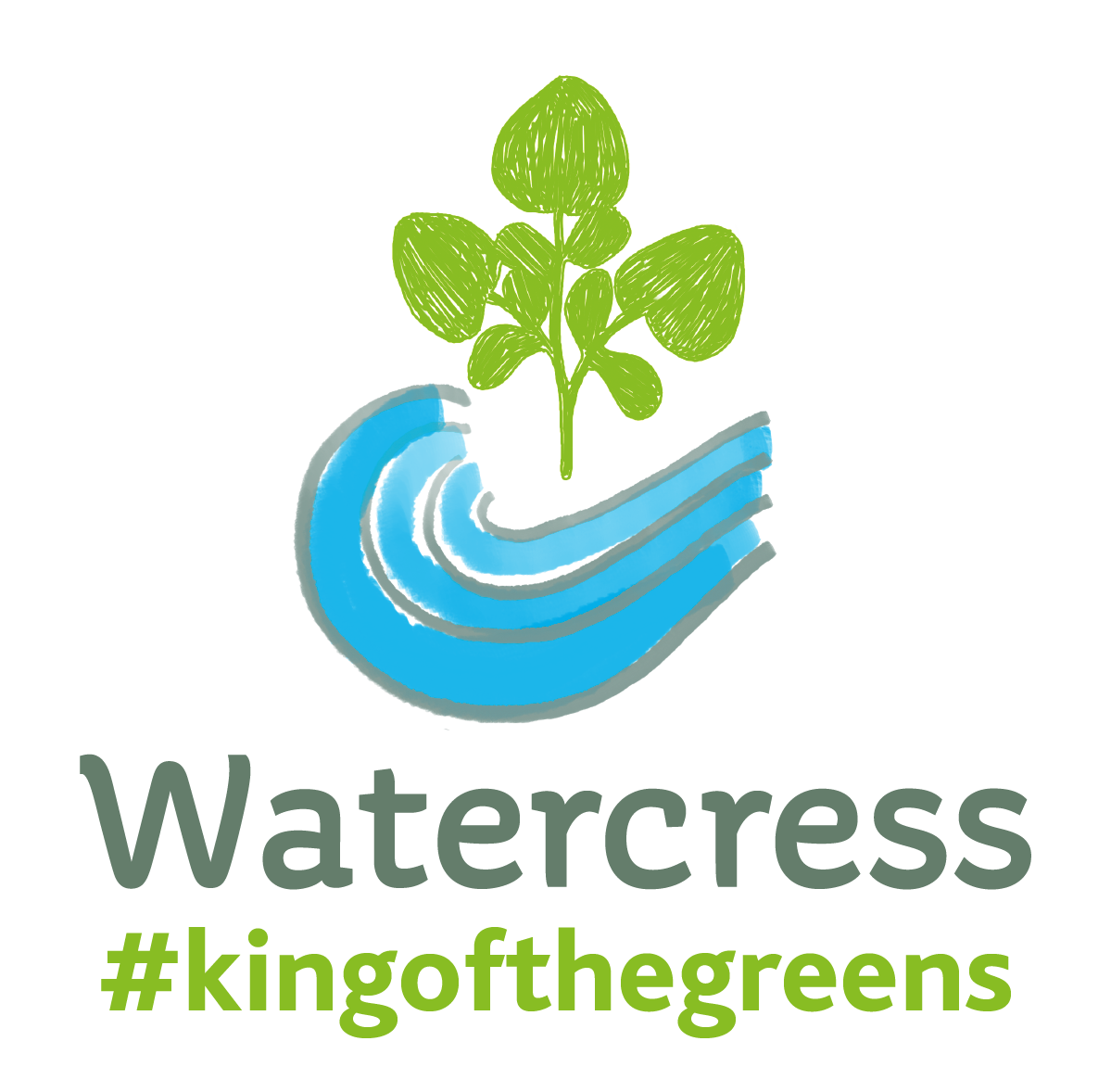FAQ: COOKING AND EATING WATERCRESS
We have a wealth of knowledge on hand to answer any questions you may have about watercress, ranging from scientific and nutritional through to recipe suggestions. If you have a great question and want some expert advice, drop us a line - we are here to help.
Q: What is watercress?
A: Watercress is an aquatic plant related to mustard, broccoli and wasabi. It is commonly confused with garden cress (also known as mustard and cress) but is actually a different species, although the two are related. The Latin or botanical name of watercress is 'Nasturtium officinale'.
Q: What does watercress look like?
A: Watercress is characterised by soft, mid-green leaves which have an unbroken edge and an oval shape. The stems are crisp and slightly paler in colour. The length of cut watercress from end to tip should be between 7 and 12cm. During the early summer months small, white, edible flowers occur as part of the plant's natural life cycle. It is commonly sold in sealed bags found in the salad aisle of most supermarkets.
Q: What does watercress taste like?
A: Raw watercress has a peppery taste, similar to other related plants like mustard and wasabi. Once cooked the pepperiness of watercress diminishes, leaving a distinctive vegetable flavour which tastes delicious in soups, stews and stir fries. More mature watercress can sometimes taste slightly bitter.
Q : Which parts of a watercress plant are edible?
A : The entire watercress plant is edible, including the flowers, although the roots are best discarded as they do not have a pleasant flavour. Watercress that is packed into a bag and sold in supermarkets is entirely edible.
Q: Can I eat raw watercress?
A: Watercress is best eaten raw as it loses a proportion of its health benefits when cooked. However, watercress is also a useful ingredient when used in cooking, as it adds a unique flavour to soups, stews and stir fries and does retain a proportion of its health benefits.
Q: Can watercress be frozen?
A: Watercress is only suitable for home freezing if it is to be used in a soup, smoothie or other cooked/blended recipe. It can be dried in the oven on a low temperature and will keep for longer than fresh, however a proportion of the health benefits will be lost. How to freeze watercress.
Q: How to store watercress?
A: Washed, shop-bought watercress can keep in the fridge for between four and six days depending on the time of year. Unwashed watercress can keep for much longer. Remember to always check the use by date on the bag if you are unsure. How to store fresh watercress.
Q: Where to buy fresh watercress?
A: In the UK, watercress can be found in the salad aisle of all major supermarkets including Tesco, Asda, Waitrose and M&S (look for it in sealed bags next to the rocket and spinach). Online, our new plastic-free watercress bunches are available through Ocado.
Q: How do I cook with watercress?
A: Watercress is most commonly used in salads, smoothies, soups and sandwiches, however it can also be treated as a herb and used to flavour sauces and dressings. It is delicious wilted or stir fried and can be used in a similar way to spinach.
Q: Where can I find watercress recipes?
A: Visit our recipe section for plenty of fantastic watercress recipes perfect for any occasion.
Find more amazing watercress recipes here
Q: How do I prepare watercress?
A: Bags of watercress need very little preparation before being eaten, however if you are using bunches you will need to remove the lower half of the stems as they are likely to be tough and have probably been damaged from the elastic band used to tie them together. If you are using unwashed product, simply wash the watercress in cold water and then drain, either in a colander or using a salad spinner.


